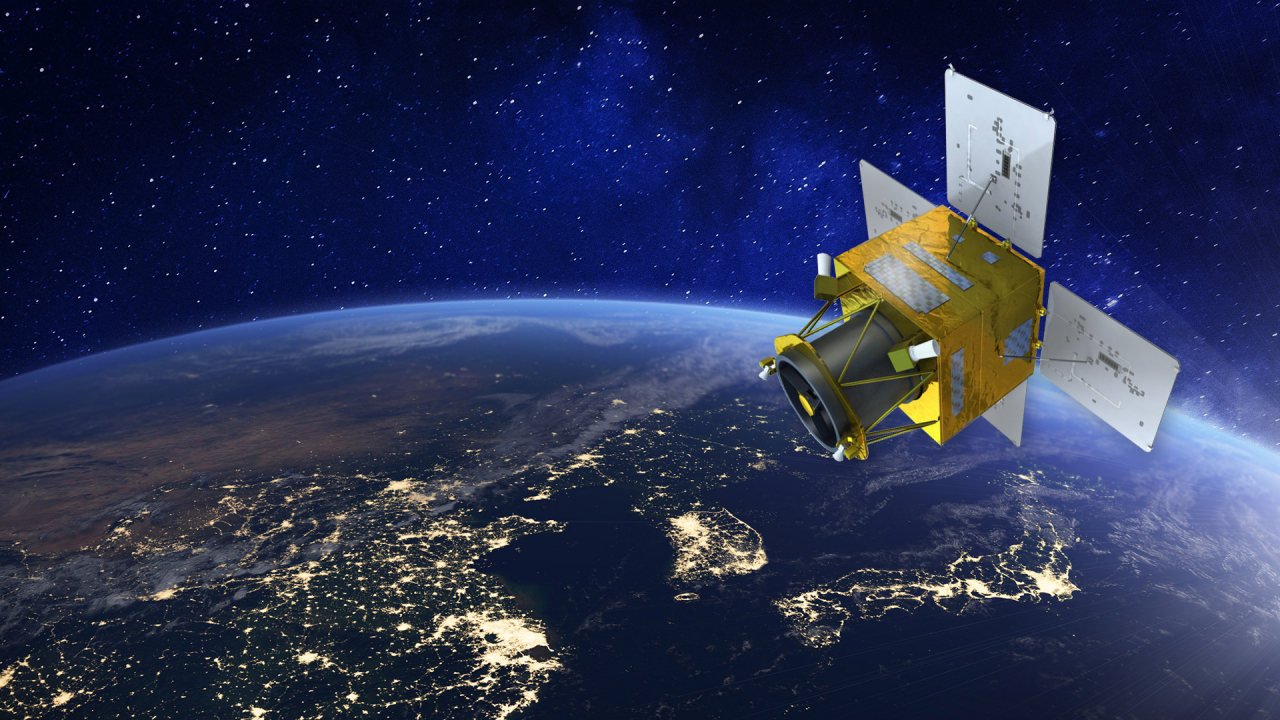 |
A sample image of Korea Aerospace Industries' second No. 2 next-generation mid-sized satellite (KAI) |
Korea Aerospace Industries announced Friday that it has inked an agreement with US space firm SpaceX to launch South Korea's next-generation mid-sized satellite No. 2 into orbit in 2025.
With the latest deal, KAI has entered a second partnership with SpaceX following a similar agreement signed in July 2021 to launch the next-generation mid-sized satellite No. 4.
Under the agreement, both No. 2 and No. 4 satellites will be mounted on Space X’s Falcon 9 rocket for launch into space orbit in 2025. The information gauged by satellites will be utilized for various public services including land resource management and disaster response, the company said.
KAI's next-generation medium-sized satellite project is part of the government's long-term space roadmap that aims to transfer state-owned space launch vehicle technologies to the private sector to boost the country’s competitiveness in the global space race, where Korea is relatively a latecomer.
Originally, KAI signed an agreement to launch the No. 2 satellite on a Russian launch vehicle by September 2022, but the plan was canceled after the outbreak of the Russia-Ukraine war last year.
To prevent further delays, KAI said that it collaborated extensively with Korea’s Science and Land Ministries to reach a deal with Space X.
“Amid global uncertainties surrounding the space industry, KAI has managed to pursue advances in the industry through our second partnership with Space X," Kim Ji-hong, head of KAI's future convergence technology institute, said.
"We aim to steer the future of the new space era by ensuring a smooth journey from the development of the midsized satellite to its final launch."
Over the past three decades, KAI has contributed extensively to the growth of the nation's space industry.
In 2015, it took part in a country-led project to build the first next-generation medium-sized satellites under the supervision of the Korea Aerospace Research Institute, and has actively secured independent satellite development technologies since.
Beginning in 2018, it took a leading role to oversee the entire process from production and testing to the launch of No. 2-5 mid-sized satellites.
The company was also instrumental in Korea's successful launch of its homegrown Nuri rocket in 2022.







![[Today’s K-pop] Blackpink’s Jennie, Lisa invited to Coachella as solo acts](http://res.heraldm.com/phpwas/restmb_idxmake.php?idx=644&simg=/content/image/2024/11/21/20241121050099_0.jpg)